The Central Valley – A Great Place for Farming in California
In October (which also happens to be California Farmer and Farmworker Month) we took a group of California Grown Creators on a tour of California’s Central Valley – a top spot for farming in California! It was a whirlwind few days of meeting farmers, tasting wine, and eating delicious farm-to-fork meals from some of the region’s best chefs. Everyone learned a lot about the hard work that farmers and farmworkers do. We also learned what types of crops are grown in the region. We’re going to give you a peek at what we did (and ideas of where you can visit the next time you’re in the Central Valley). But first, let’s get oriented.
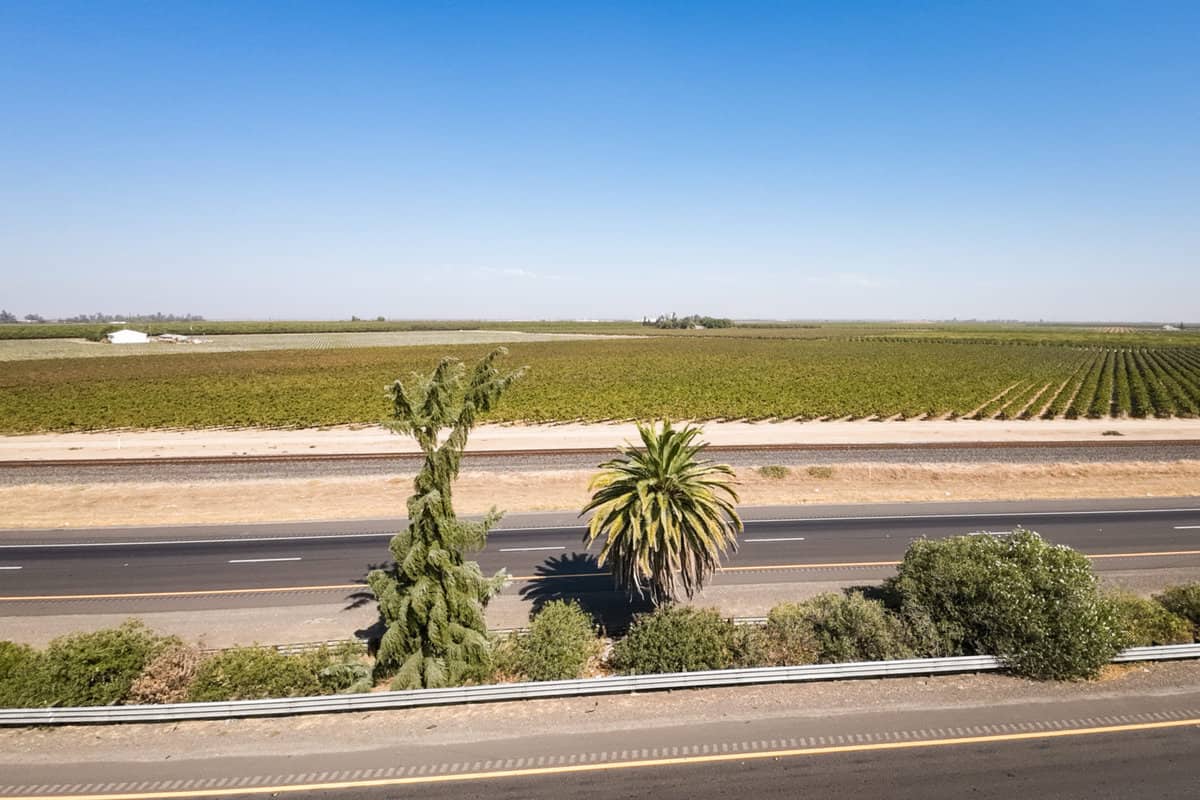
What areas are considered Central California?
The Central Valley is California’s agricultural hub. Located in the inland part of the state, it stretches 450 miles from Bakersfield to Redding. The Central Valley is actually made up of two valleys: the Sacramento Valley to the north and the San Joaquin Valley to the south. At the heart of the Central Valley are Madera and Fresno counties, and they will argue about which one reigns supreme. That’s where our tour was located.
Have you ever noticed the “famous” marker of California’s north/south geographic center? There are two trees, a pine and a palm, planted in the median of Highway 99 about 10 miles north of Fresno and a couple of miles south of Madera. Colloquially known as “Where the Palm Meets the Pine,” the pine tree represents northern California and the palm SoCal. Be sure to pay attention the next time you’re driving through the area!
Why is the Central Valley so good for Agriculture?
The San Joaquin Valley is one of the best places for farming in California. Why? It’s surrounded on each side by hundreds of miles of contiguous mountain ranges. Over the last several thousand years, erosion from those mountains has enriched the valley’s soils creating very fertile farmland. Add in a moderate, Mediterranean climate, a diverse population of skilled farmers and farmworkers, and a commitment to cutting-edge technology, and you’ve got a farming powerhouse that is unmatched anywhere else in the world. There are more than 4,000 farms in this part of the Golden State, and over 90% are family owned!
What crops are grown in the Central Valley?
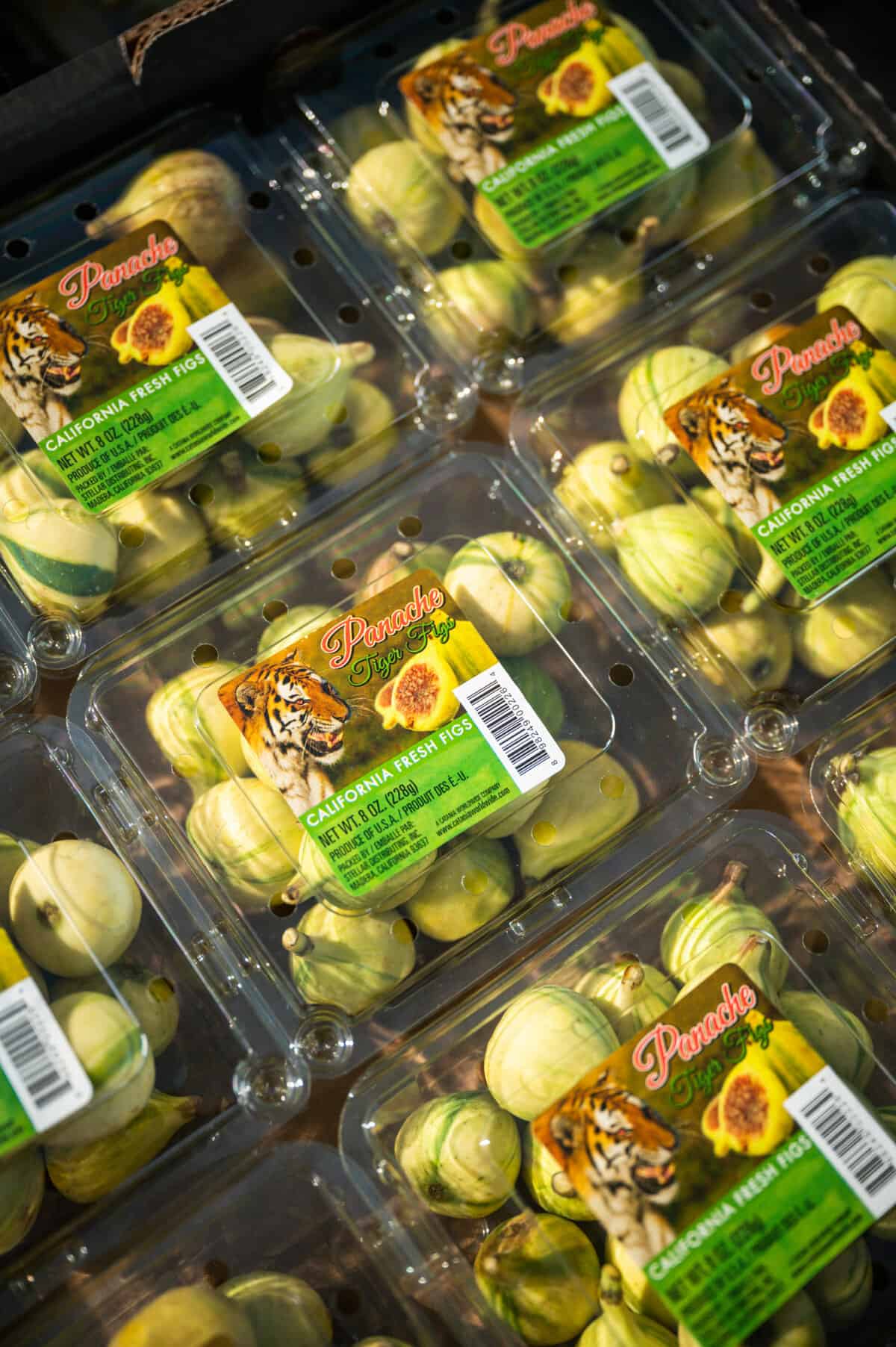


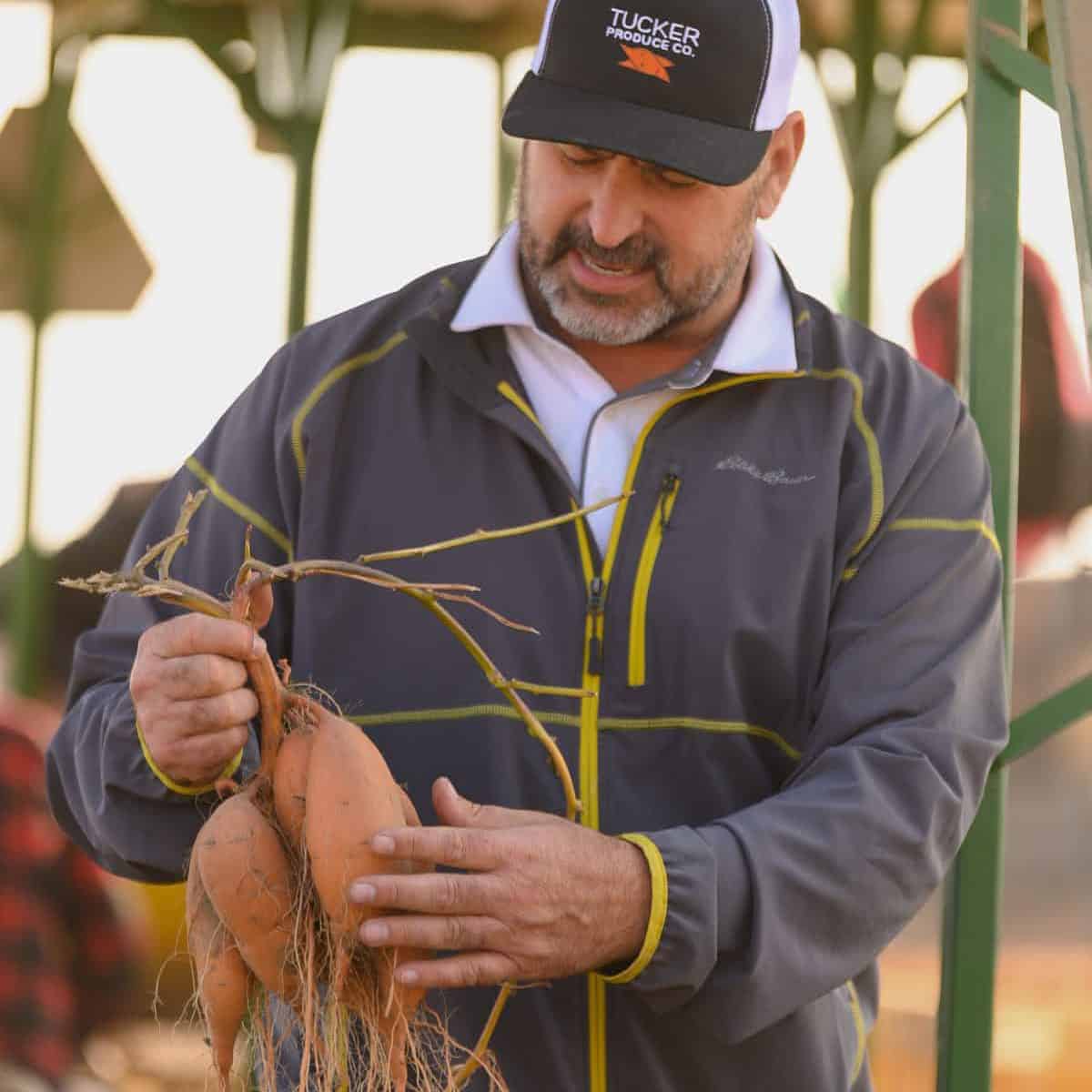

The Central Valley grows an incredible diversity of crops – about 250 – which comprises a third of the nation’s fruits and vegetables. You’ll find citrus, sweetpotatoes, table grapes, kiwis, figs, olives, winegrapes, prunes, nuts, cereal grains, hay, cotton, tomatoes and vegetables.
California Grown Creator Tour of Farms in Fresno & Madera Counties
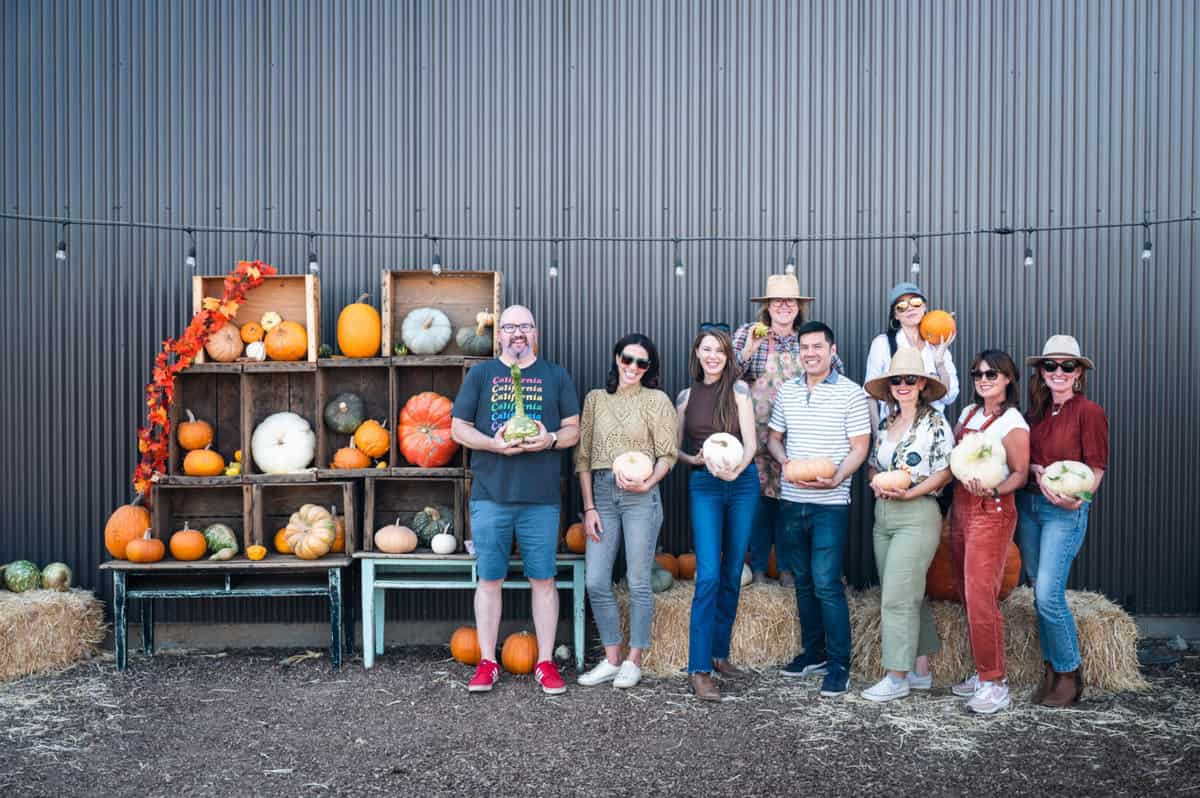
Our tour took us all around the region to some farms that are open to the public and to some that are not. We learned how kiwifruit and figs are grown and packaged for shipping throughout the United States when we visited Catania Worldwide. Catania has a large packing facility in Madera, California. On the day we visited, we watched kiwis and figs being sorted by size and weight, then carefully packed to be distributed to a grocery store near you. We also toured a nearby kiwi farm (did you know that kiwifruits grow on vines like grapes?) and a fig orchard. Watching so many skilled people handle the crops from harvesting to packing, and the careful, skilled work it all entailed was eye-opening. There’s a lot to learn about farming in California!
At another farm visit, our Creators learned how some raisins are actually dried on the vine. Raisins are typically clipped from the vines and dried in the sun on long sheets of paper in the vineyards. Raisins that are dried on the vine or “DOV” are dried exactly as it sounds – on their vines – which slows down the process a bit creating a sweeter, juicer product. It’s more labor intensive and requires some special technology so they are a little harder to find than your standard raisin. But if you have the chance, snag a bag or two of these delicious dried fruits!
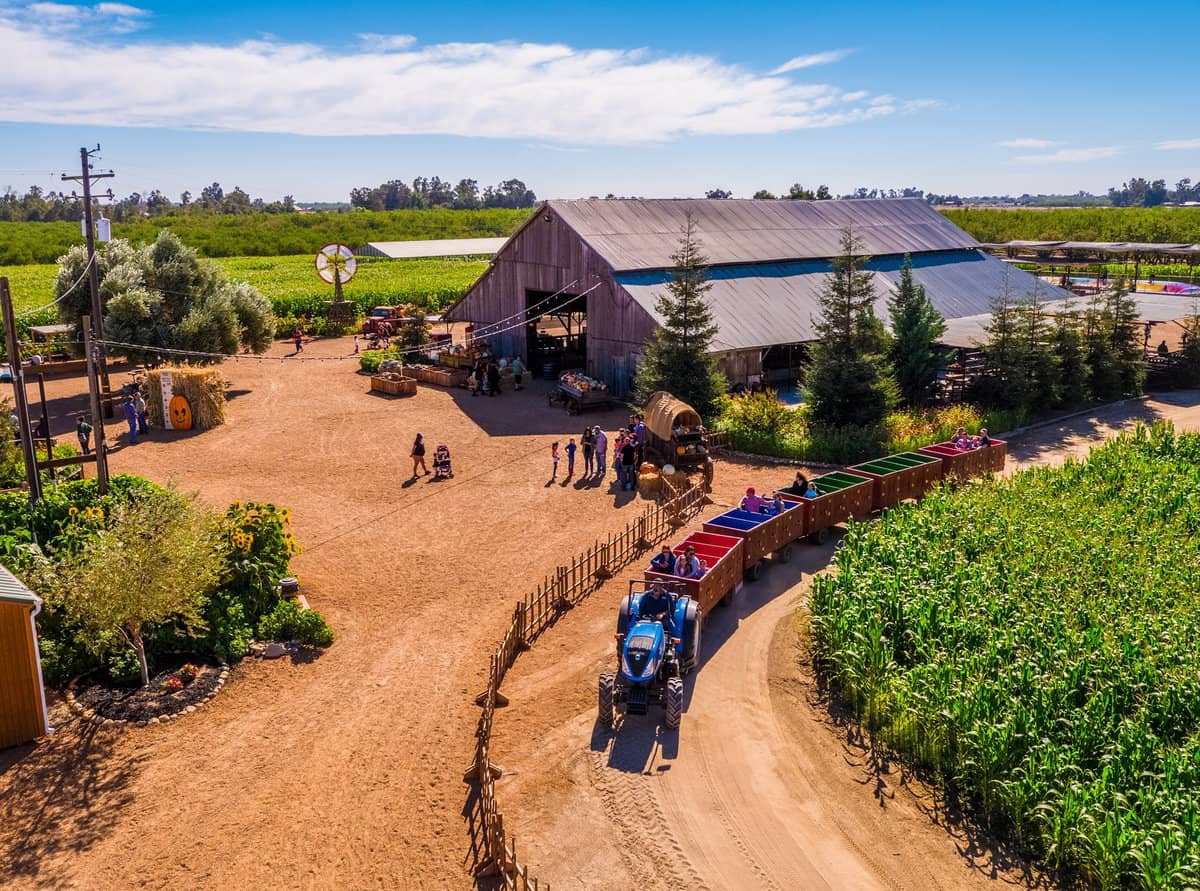
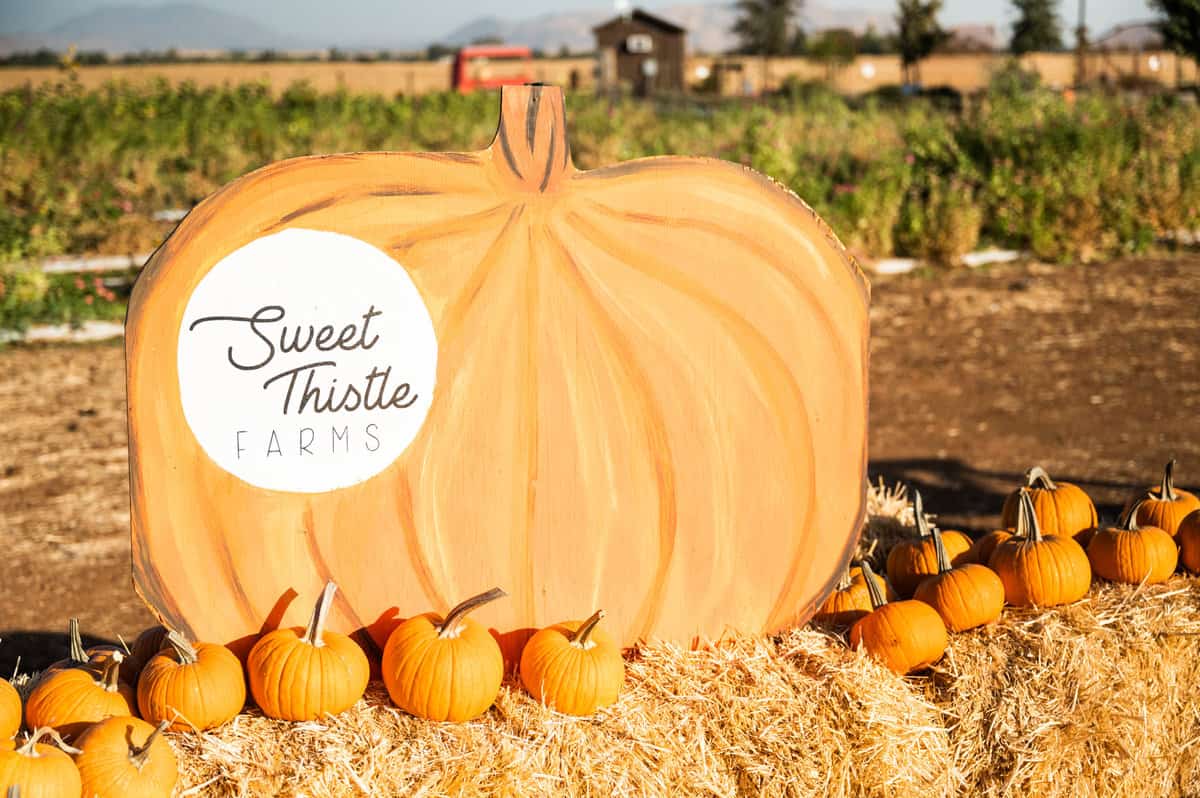
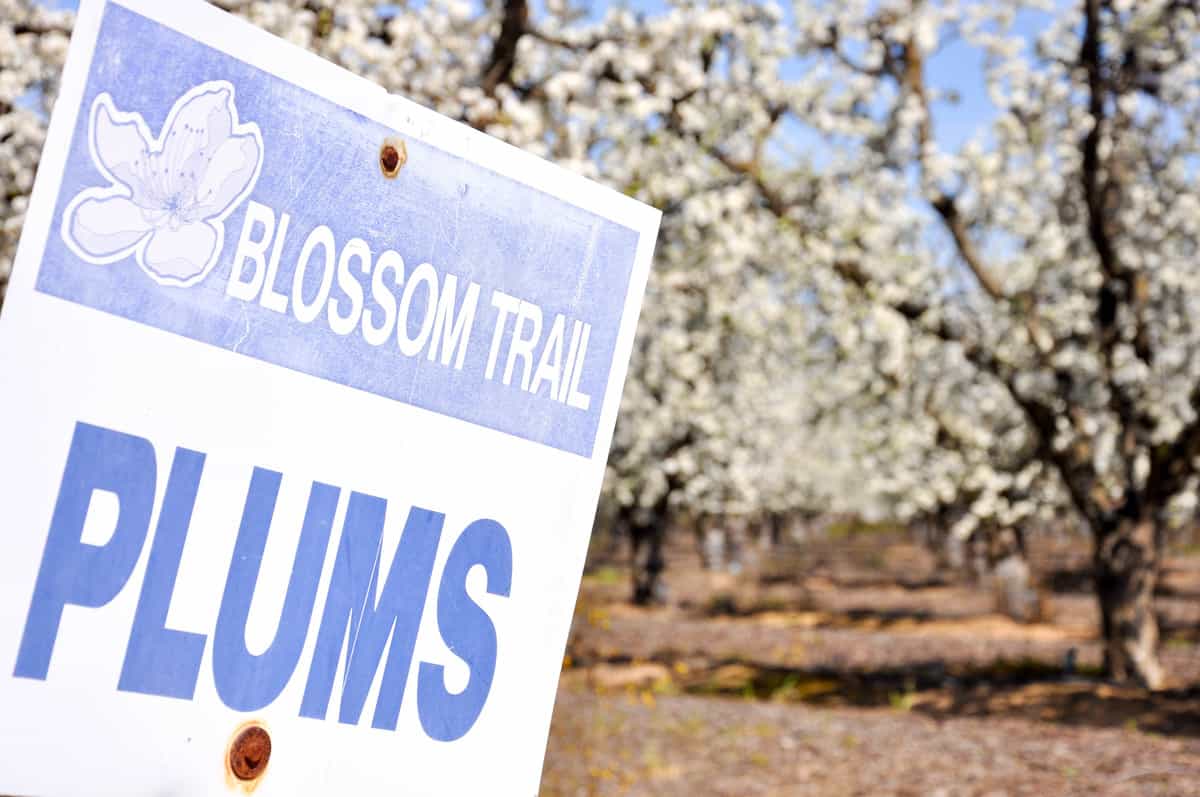
Farms you can Visit in the San Joaquin Valley
While not every place our California Grown Creators visited is open to the public, there are many more that are. The Central Valley has so many fun and unique places to explore where you can learn more about its rich farming history. Here are a few spots to learn more about farming in California.
- Sweet Thistle Farm – Sweet Thistle Farms is a boutique cut flower and pumpkin farm at the base of the foothills in Clovis, California. They’re only open to the public in fall with a U-pick pumpkins and flowers (plus crafts and other fun activities), but you can enjoy a flower + farm CSA box year-round.
- Simonian Farms – The Simonian family has been farming in the Fresno area since 1906. Stop in and visit their farmstand to buy some of their many delicious California Grown products, take in their impressive collection of antiques, or taste some wine. The Fresno County Blossom Trail starts at Simonian Farms as well!
- Blossom Trail – The San Joaquin Valley is an explosion of blossoms from about mid-February through mid-March. The Fresno County Blossom Trail winds through picturesque (and privately owned) farmland throughout the region.
- Hunter Farms – Visit this family-owned farm + pumpkin patch in Atwater from late September through Halloween. With hayrides, a corn maze, and a critter corral Hunter Farms has fun for all ages!
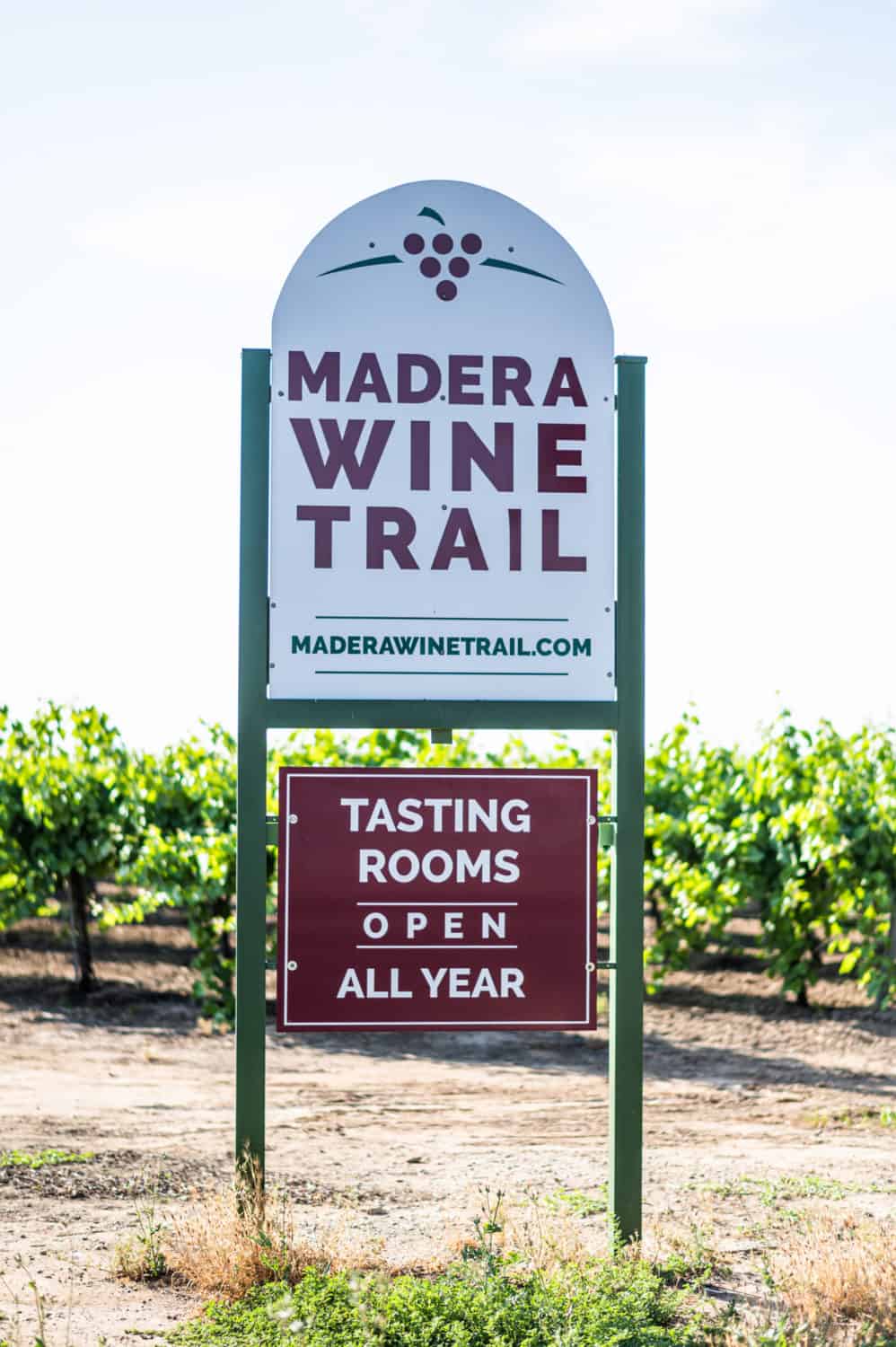
Visit the Madera Wine Trail & Beyond
For a low-key wine tasting experience, visit the Madera Wine Trail. While Madera is actually one of the oldest winemaking regions in the Golden State, it is simultaneously “up and coming.” Folks started making wines there in the 1920s, but there is also a new crop of boutique wineries hitting the scene. You’ll be impressed by the large number of award winning wineries that are part of the Madera AVA. Here’s a handy map of the Madera Wine Trail for reference.
- Quady – Quady specializes in sweet and dessert wines including Moscatos and Port, along with Vermouth, which is a unique fortified wine infused with herbs and spices. Vermouth is delicious on its own as an aperitif or added to other cocktails.
- San Joaquin Winery – Steve and Cindy Schafer founded San Joaquin Winery in 2005 and started making wine four years later. Today they produce over 18 different varietals under 9 labels and sell their wines internationally.
- Ficklin Vineyards – The Golden State’s oldest (and most award-winning) port house helmed by third-generation winemaker Peter Ficklin.
Other Central Valley Wineries to try:
Heading to Yosemite? Be sure to visit these Mariposa Wineries on your way up the mountain!
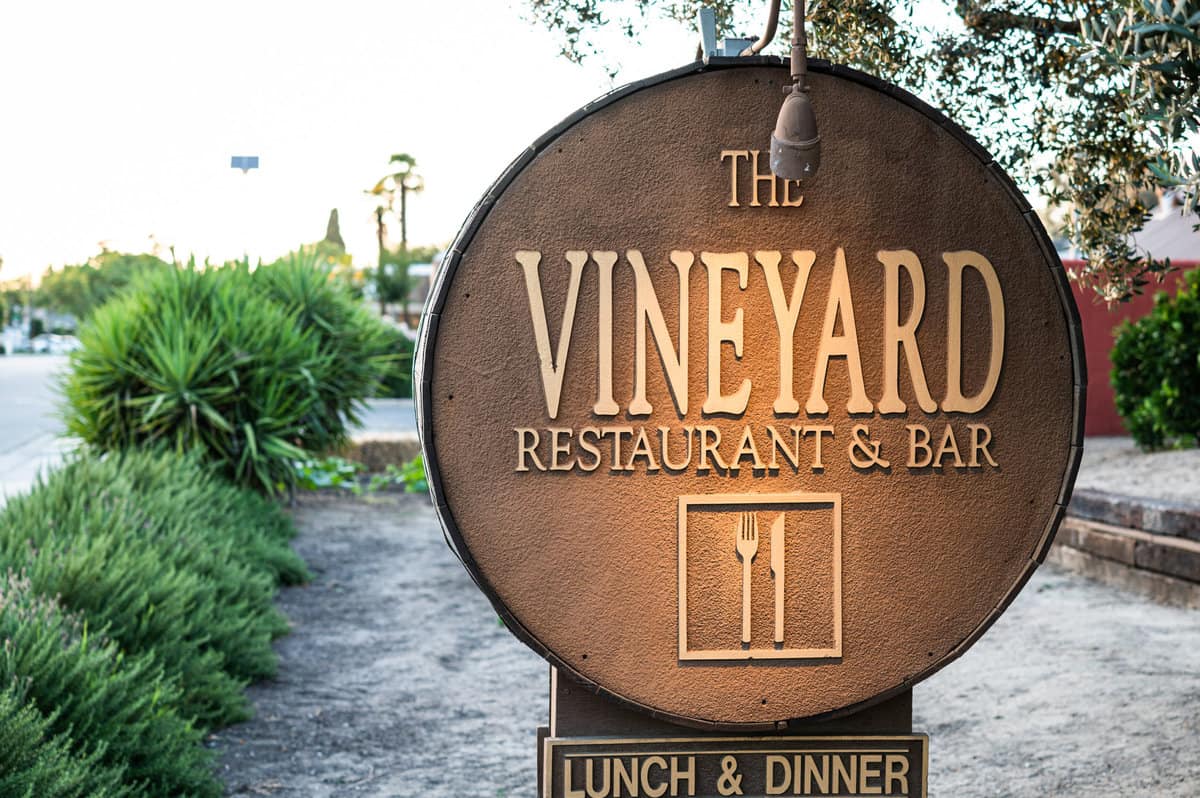
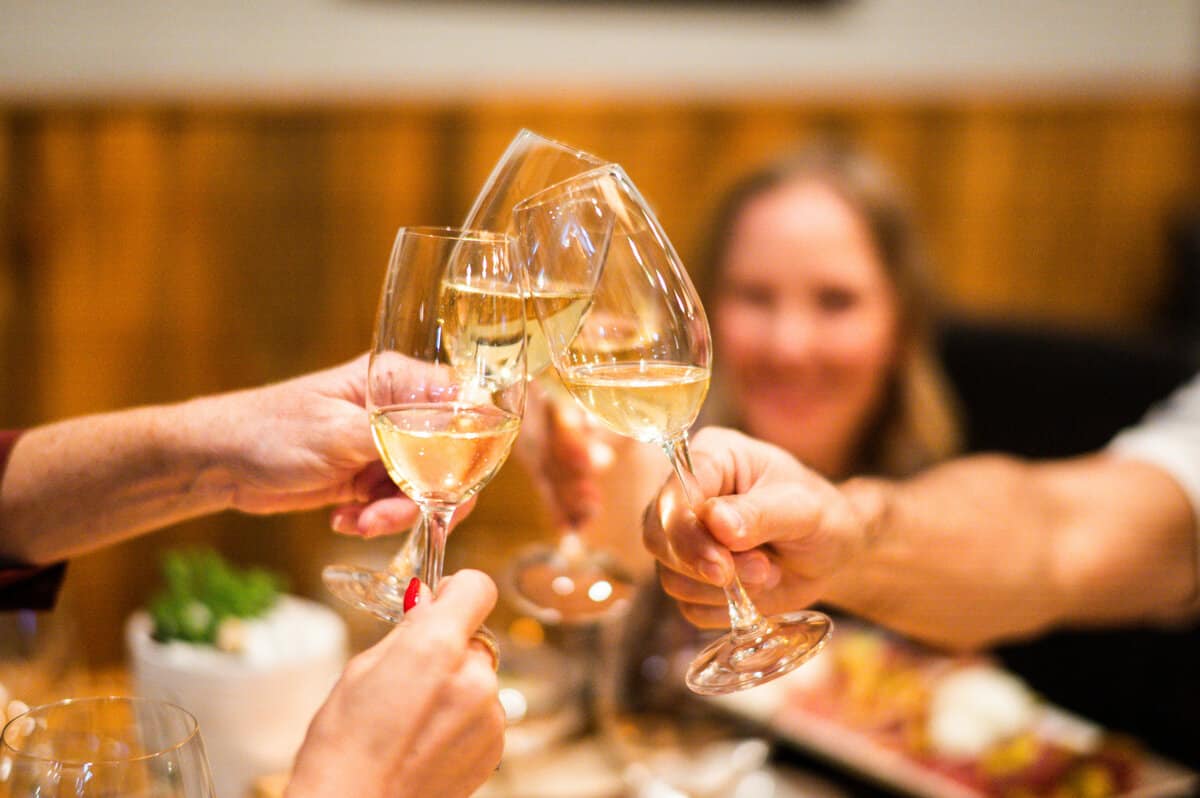
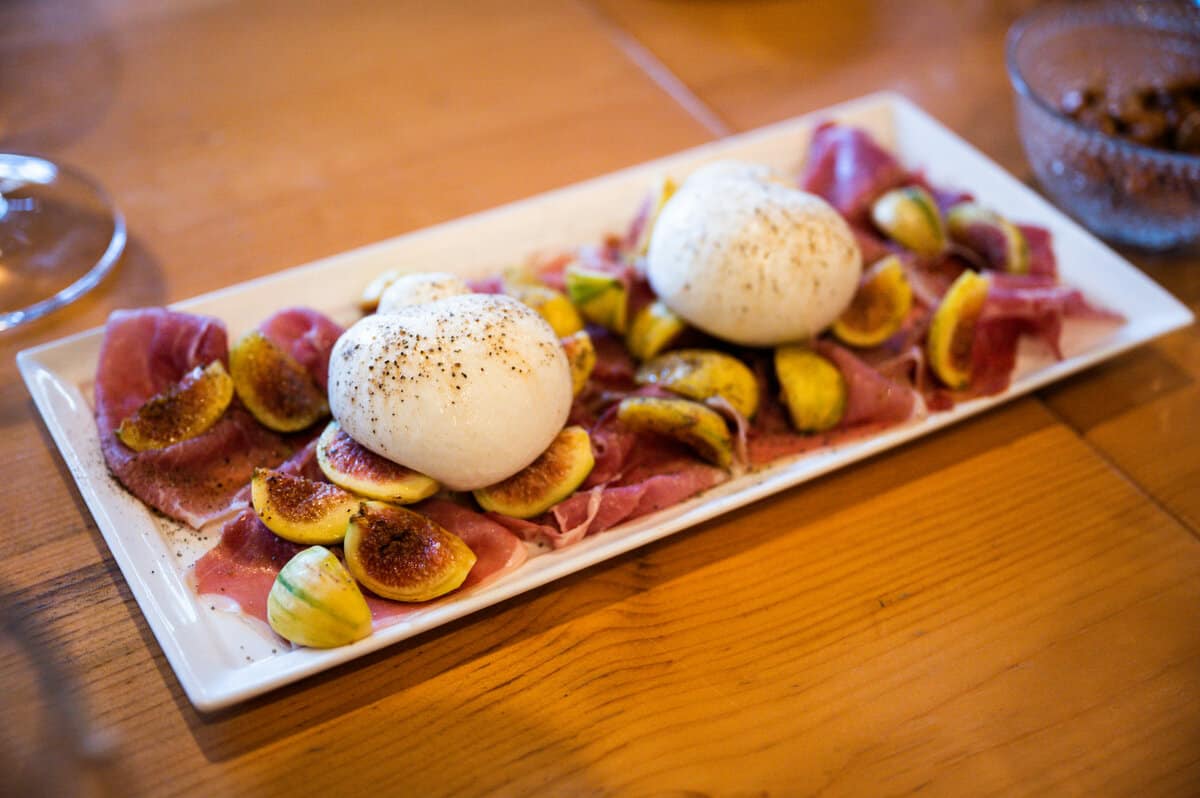
Where to Eat in Fresno and Madera
All the farming in California means that chefs here have access to the freshest food around! Fresno and Madera have several noteworthy restaurants featuring farm-to-table cuisine and local wines. From upscale restaurants worthy of a special occasion meal to fast-casual and everything in-between, there’s something that everyone can enjoy!
- Trelio – Helmed by Chef Chris Shackleford, Trelio is an upscale Cal-Ital farm-to-table restaurant with a seasonal menu featuring local food + wine.
- The Vineyard – Since the Vineyard Restaurant opened in Madera in 1977 they have featured delicious local foods and wines from Madera and the San Joaquin Valley. There are three menu items that are a must try (and will never be taken off the seasonal menu) – the Lamb Shank, the Central Valley Raisin Growers (think club-style triple-tiered sandwich with grilled ham, swiss and cheddar cheeses on raisin bread), and the Lasagna. If you go, tell them K.C. sent you.
- Annex Kitchen – The Annex Kitchen in Fresno is an Italian-inspired restaurant influenced by the seasonal offerings of farmers throughout Central California.
- Heirloom – A fast-casual restaurant in Fresno, Heirloom is locally owned and operated and showcases amazing local seasonal produce.
- Libelula – This funky farm-to-table restaurant in downtown Fresno has been racking up the awards. Stop in for a bite and see why.
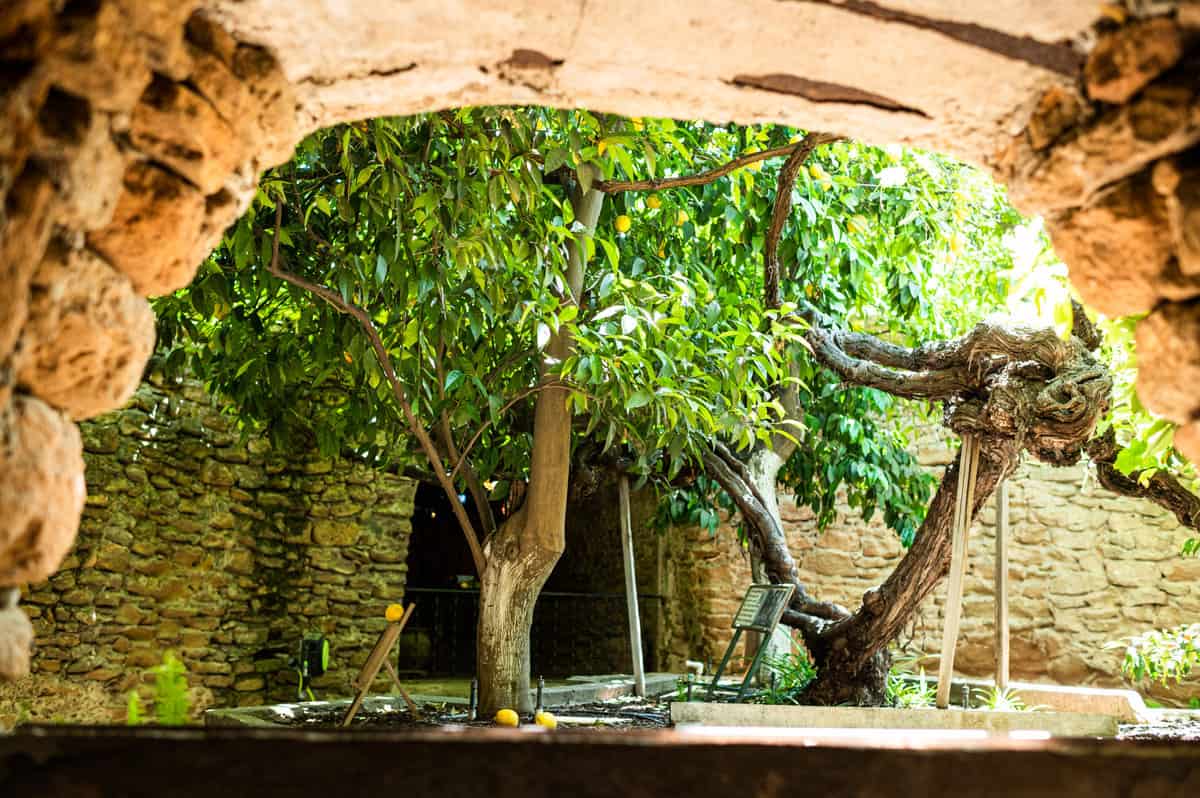
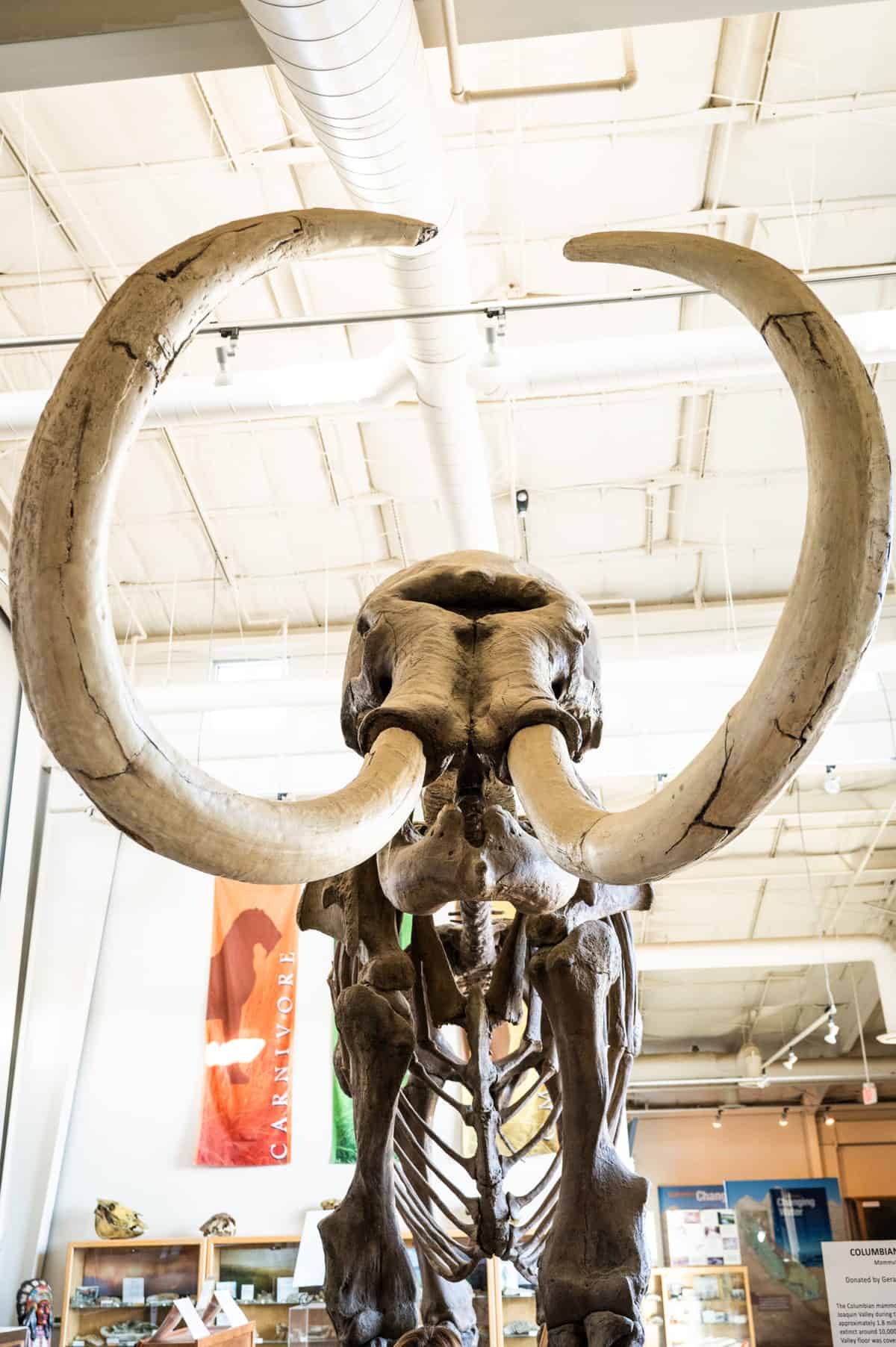
What Else to Do in the Central Valley
- Bravo Farms – Bravo Farms has become an iconic Central Valley roadside attraction (and a great place to stretch your legs). With two locations on both of California’s north/south highways (I-5 and Highway 99), you can grab a bite to eat, purchase locally grown fruits, nuts, wine, honey and other delights, and see a bit of history of farming in California while you’re at it.
- Fossil Discovery Center – In 1993 while diggers were moving soil around a landfill, they discovered an 8-foot mammoth tusk. Digging stopped, while experts from from UC Berkeley assessed the situation. Soon after, community members formed the San Joaquin Valley Paleontology Foundation. There have been a great many more discoveries made in that landfill in the years since. Discoveries include newly identified species and a diverse array of fossils including sabertooth tigers, Columbian mammoths, horses and ground sloths to name a few. The site is now known as being one of the richest, most significant Pleistocene fossil finds in North America. You will find the discoveries housed at the nearby Fossil Discovery Center in Chowchilla. PS – one of the reasons that the San Joaquin Valley is one of the best places for farming in California is due to its rich soils. The fossils that have been discovered in the area are just more evidence of that!
- Forestiere Underground Gardens – Baldassare Forestiere constructed these unique underground gardens in Fresno. Forestiere was a Sicilian immigrant, who came to America in 1901 to pursue his dreams of becoming a citrus farmer. Over 40 years, and using only simple tools, Forestiere created a subterranean complex of patios, grottoes, and garden courts with stones he had dug up as he worked. Stop in to tour this very unusual 10-acre “farm” with a wide variety of citrus trees, as well as carob, quince, and date trees. Naturally, he also grew grapes for eating and making wine.
- Sierra Nut House – Visit to buy nuts, dried fruits, wine, honey and other items sourced from local farmers. It’s also a great place to pick up your holiday gifts.
Article by Alison Needham. Images + video by James Collier.
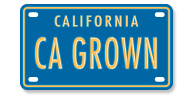

I like to work in fields and hard working
What an insightful post! The Central Valley truly is a treasure trove for agriculture in California. I loved learning about the diverse crops and the region’s importance to the state’s economy. It’s amazing how such a vast area can produce so much food for not just California, but the entire country! Thank you for highlighting this vital part of our agricultural landscape!